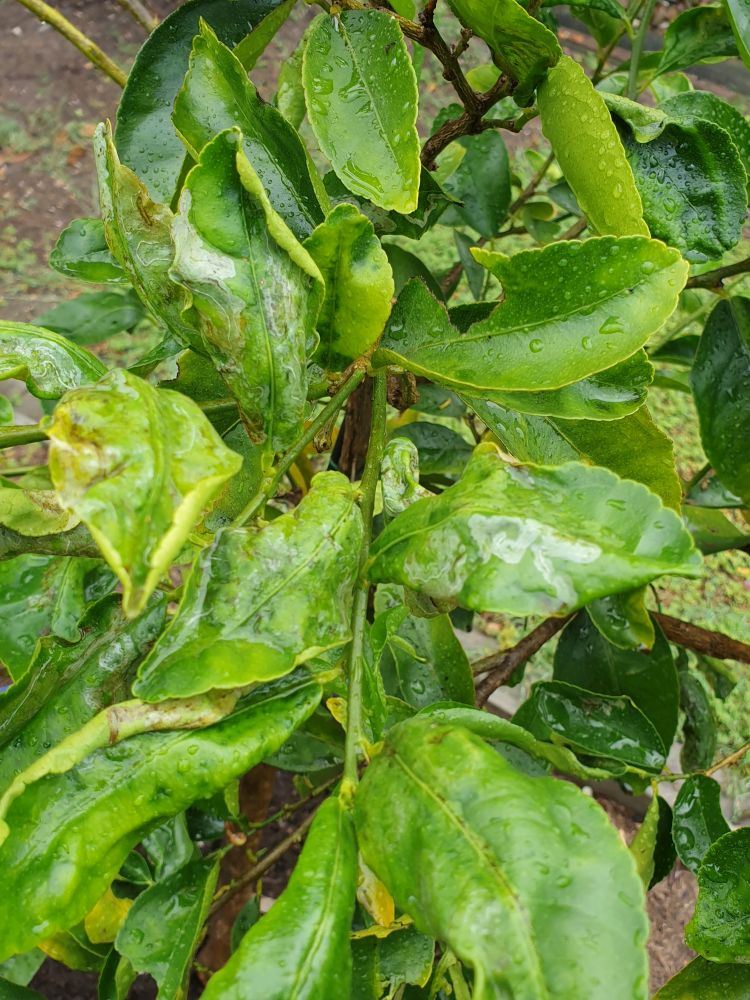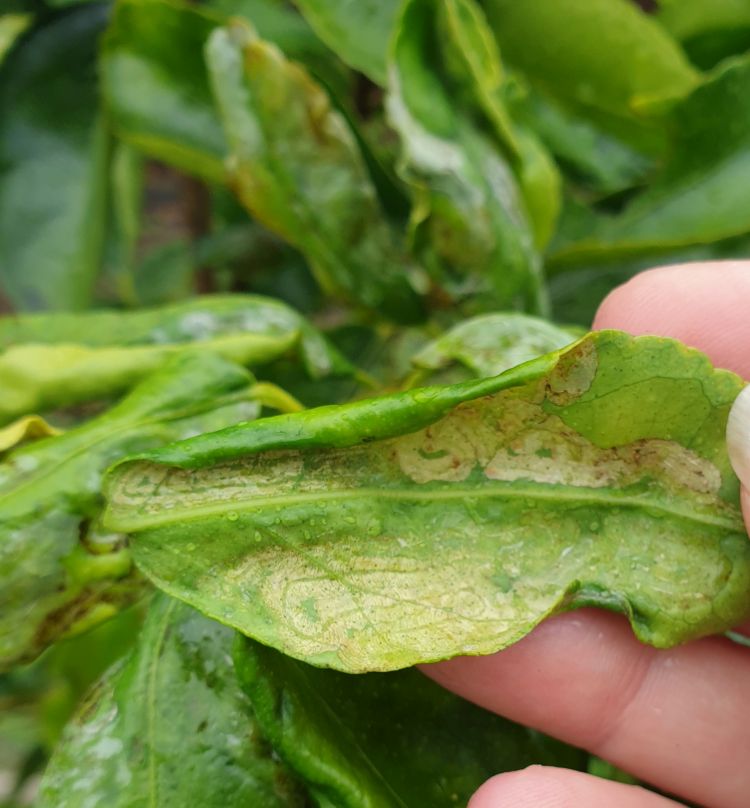Citrus leaf miner (phyllocnistris citrella) is a very common pest to all types of citrus trees. No matter where in the world you live, this tiny, insidious pest is likely to appear on your citrus during summer. Its distribution is close to worldwide, so whether you grow limes, lemons, oranges, finger limes or hybrids, this common pest can infiltrate and damage your precious fruit trees without you even realising it. It’s important in gardening to ‘know the enemy’, so let’s have a look at citrus leaf miner and how to treat it.
What is Citrus Leaf Miner?
Leaf miners are tiny grey flies about 2 mm long, whose larvae feed on leaves. A moth of the family gracillariidae, these pests appear with the onset of warm weather and feed on the fresh new growth of citrus trees. Unlike gall wasp, citrus leaf miner attacks leaves rather than stems.
Why is Leaf Miner a Pest?
Sadly, these larvae are practically invisible, which means that picking individual insects off by hand is not possible. They destroy the soft healthy tissue in the middle of the leaf by tunnelling through it, leaving a curled leaf with a visible ‘snail trail’. This renders leaves unable to capture sunlight and grow effectively, leading to a weak, stunted tree.

Once you have leaf miner in your garden, it is virtually impossible to eliminate. On the upside, if you keep it under control, they won’t kill your trees either. Exclusion and home-made remedies are the best way to combat leaf miner (even if you wanted to use them, insecticides aren’t particularly effective). A daily walk around your garden is highly recommended, so you can keep a close eye on pest activity.
When & Where can Leaf Miner Occur?
Citrus leaf miner is most active during summer and into autumn. They will make any kind of citrus trees their home, and often come back to the same exact trees year after year. While individual gardens always vary, I find that in my garden south-west of Brisbane, leaf miner begins to appear around late November. They can also attack other plants in the citrus family (Rutaceae), like murraya, but this isn’t as common.

How to Combat Leaf Miner?
Make sure to remove and bin (not compost) any affected leaves, consider netting trees, and spray with a home-made white oil. White oil is a mixture of soap and oil that suffocates soft-bodied insects. Mixed with water and applied with a spray bottle, it is highly effective in combatting leaf miner, plus it is cheap and super-easy to make at home; here is our recipe. Be aware that this spray can adversely affect bees, so if you’re working to attract pollinators to your garden, you’ll need to be judicious with its use.
If you’re wanting to ward off the appearance of leaf miner in your garden, there are a couple of preventative measures you can take. You can prune off the new growth and bin the prunings, which will make your trees much less attractive. This will work, but does have the disadvantage of significantly slowing the growth of the tree. It may help to fertilise in late winter, after any fruit has been harvested. This has the benefit of promoting strong growth during spring when the leaf miner is less present. And that’s it for our citrus leaf miner summer pest profile. Remember that vigilance is key to pest management. If you can walk around your garden daily and inspect plants and trees closely, you’ll be able to start any required pest management before problems get out of hand.


















